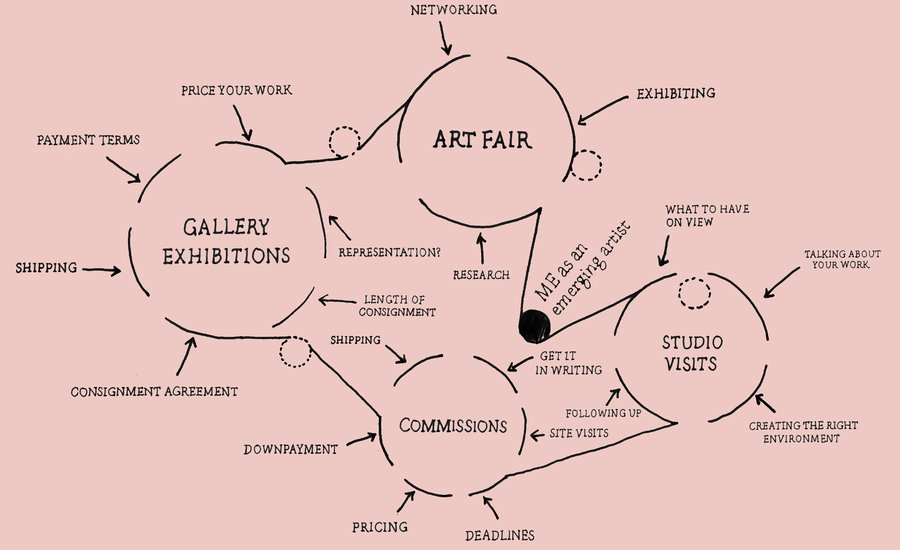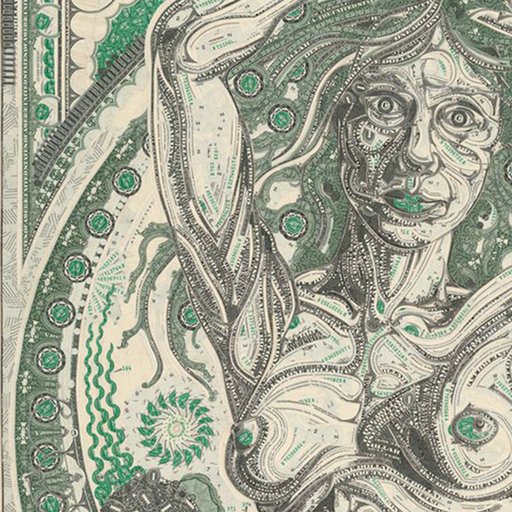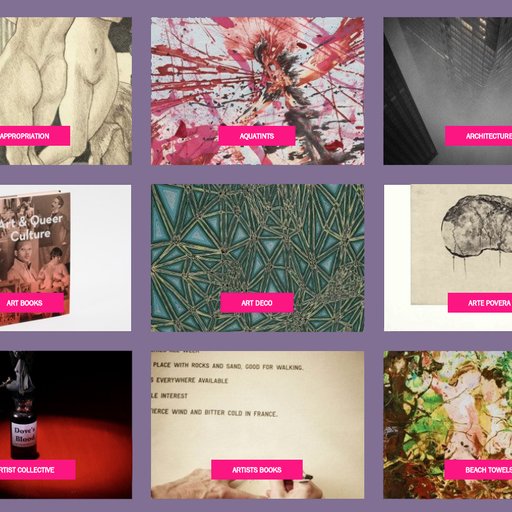This guide was originally published by The Creative Independent, a resource of emotional and practical guidance for artists that focuses on the trials and tribulations of bringing creative work to life.
There’s a lot of conversation out there about the “hyper-professionalization” of the emerging artist, but as far as I can tell, few schools teach or offer artists the tools that would enable them to successfully hit the ground running within the vastly complex art world. If you yourself are an emerging artist, you’ve likely picked up a few tips here and there, but for the most part, there is no “user manual” for getting started with galleries, collectors, and beyond. To that end, I’ve taken insights from my experience working in the art world and running a gallery over the last decade, and distilled some tips for a few common scenarios you’re likely to encounter: showing work with a gallery, heading to an art fair, hosting studio visits, and completing commissions for collectors.
In Part 1, I go over what you'll need to know to navigate a relationship with a gallery. A gallery has offered to include your work in a group or solo exhibition—what can you expect? What do you need to make sure everything is in order before the exhibition opens?(Stay tuned for Part 2 about attending art fairs, and Part 3, about preparing for a studio visit.)
Use a consignment agreement
First things first, never send a gallery your work without receiving a consignment agreement. This document protects both you and them. It is standard practice for the gallery to issue this, and if they haven’t by the time your work is about to leave the studio, it’s absolutely ok to ask for one before you hand over the work.
A standard agreement sets out the terms for the sale of the work, your payment (should the work sell), how the work will be shipped, how the work will be photographed/documented, and the length of time that the gallery will have exclusive access to sell the work.
Pricing your work
You should work with the gallery to decide the right price point for your work. Pricing is determined by a few factors: if you’ve sold work before (and what it went for then), plus the gallerist’s knowledge of the art market. They should have indicators of what is a reasonable ask for your work. However, if what they come up with feels too high or too low, speak up! These things matter and are hard to correct once made public.
Typically you can expect a 50/50 split on all sales. Most galleries will ask for the ability to discount your work up to ten percent, and the impact of this discount will be split between you and the gallery. Any discounting over ten percent should require a call to you, or the gallery should assume the financial responsibility for the discount.
Some agreements will also ask for the discretion of a shared 20 percent discount to be offered to museums, since selling a work to a museum ensures the long-term care for your piece and the potential for exhibition, making the discount worth it.
Payment terms
The consignment agreement should lay out the terms for how the gallery will pay you, should the work sell. These can vary gallery to gallery, but in general, you should expect to see your payment arrive 30 to 60 days after the gallery has received payment via the buyer.
Most galleries expect payment from the collector within 30 days as noted in their terms of sale; however, some clients are notoriously slow to pay. If you’re waiting beyond 60 days from the point of sale, you should ask the gallery if they’ve been paid yet.
A gallery will typically send you a check or wire transfer. Do not expect a 1099 form come tax season—as an artist you’re providing a good, not a service, and therefore don’t need a 1099. As always, it’s a good idea to keep a record of your payment history.
Shipping
For a solo exhibition with a gallery that doesn’t yet represent you, you should expect to cover the shipping costs of your work in one direction. If the gallery expects something different, be sure to discuss this in advance of the exhibition and detail the plan in the consignment agreement.
Before the gallery ships your work anywhere, be sure they know how your work should be shipped in order to keep it safe, i.e. with a fine art shipper, in a crate, etc.
If your work is going to be included in a group exhibition, you may be expected to cover shipping both ways—however, before you cover any major expenses on your own, be sure to have a conversation with the gallery so you fully understand what you’re responsible for.
The terms of the consignment should also designate who is covering the insurance of the work in transit. Typically this is the gallery, as they will have a fine arts insurance policy that covers work from damage, theft, or loss in transit.
Length of consignment
This will vary from gallery to gallery, but usually they’ll want to keep your work for three to six months following the close of a solo show, and often three months or less following the close of a group exhibition.
Representation
I’ve already mentioned the distinction between representation and simply exhibiting with a gallery several times. Gaining representation is a process, and often, galleries view exhibiting your work in a group show or a solo show as a trial run for the partnership.
RELATED ARTICLES:
























